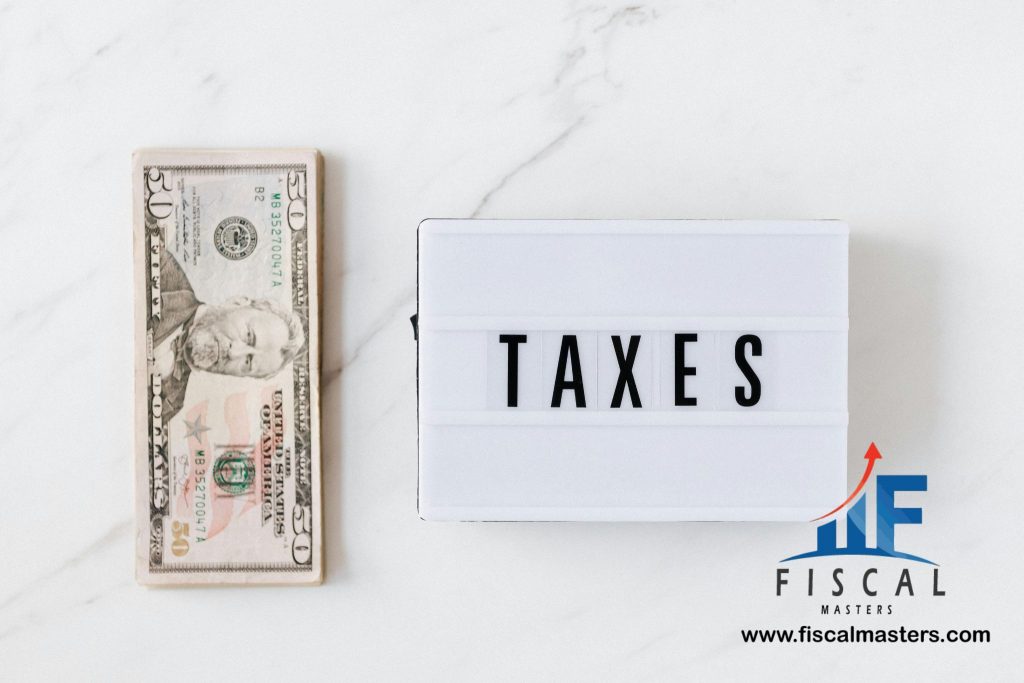Did you know the predicted retirement age for current workers is 66, although the average retirement age for retirees in the United States is 64? This indicates the importance of planning your post-retirement financial security before you retire.
As you approach retirement age, you must adopt smart strategies to ensure that you have sufficient savings and investments to support the golden years of your life. We’ll review everything you need to know to start your road towards a financially secure retirement.

What are Retirement Savings?
Everyone wants a safe and secure future where they are financially independent. Retirement planning is what one does so that when their paid jobs end, their life is sorted.
It is not just about saving money but more about defining your strategies for saving, income goals, and investments and how you can achieve them. Ideally, it is suggested that you start your retirement planning earlier than retirement. The sooner you start saving, the more secure your future will be.
Read more about: Tax-Saving Strategies- How To Maximize Savings For Mid-Level Enterprises
Saving for Major Expenses
Everyone knows that most things they spend money on are either food, clothing, or housing.
House
According to the estimated studies, the median household, aged 55 to 59, typically has $7,900 in checking and savings accounts and $24,500 in retirement accounts.
Housing expenses can cover almost a third of the average budget. Buying a property or renting a house is a costly and vital decision.
But if you choose wisely and select a place with only as much space as you actually need, and find locations that are easily affordable in this way, you can save hundreds of extra dollars every month.
Food
According to several surveys, the average household spends 15% of its budget on food, which is almost 4% of annual earnings.
Clothing
Food and household clothing are also necessities. Americans spend around $120$ on clothes every one or two months; hence, 15% of the budget is spent on clothes.
Check out: Understanding the Difference Between Saving Accounts and Investment Accounts
8 Ways to Stretch Your Retirement Savings
The following are the 8 ways to stretch your retirement savings.
Start Early and Understand Your Retirement Needs
About 46% of families reported having any retirement account savings as of 2022. Nine percent had saved more than $500,000, and twenty-six percent had saved more than $100,000.
Your retirement plan strategy should start early during your working time, as the start plan is about setting aside a particular amount of money from your paid job for your retirement. During the peak time of your career, you can include specific income or asset targets and decide how you can achieve them.
You can no longer save once you reach retirement age, but your savings and income assets can help you pay. How much you need to save depends on your needs and plans. Some plans suggest that you need to save around $1 million to retire comfortably. However, some experts also advise saving up to 15% annually to fund a stable retirement.
The best idea is to consider all of your expenses before your retirement. You should calculate all your major expenses, including expenses for food, clothing, health insurance, and your vehicle/transportation. Since it would be your retirement, you should also consider saving up for entertainment and travel. It can be tough to come up with exact amounts, but having an estimated amount is still better than nothing.
Also read: Financial Literacy For Kids: Teaching Money Management Skills From An Early Age
Create a Budget and Go According to it
Start by calculating the net amount you earn and the amount you can save regularly to see if you’re on track for retirement.
Keep checking investment fees, as they can have a significant effect and erode your retirement funds. If you find it hard to start investing, you should contact a financial professional for help and advice.

Diversify Your Investments Wisely
You can diversify your investments wisely by following 5 steps.
Assets Allocation
Asset allocation is the process of distributing your investing portfolio among several asset classes. Finding the right combination of assets depends on your time horizon, investment goals, and risk tolerance.
Risk management
Keeping a well-diversified investment portfolio requires effective risk management. By spreading your portfolio across various risk profiles, you can reduce risk while following your financial objectives.
Investment Selection
Developing a well-diversified portfolio requires careful consideration of your investment choices. Choose individual stocks, bonds, or mutual funds based on criteria including investing objectives, expense ratios, and past performance. Always do your homework and consult an expert to make well-informed investing selections.
Portfolio Rebalancing
Portfolio rebalancing involves periodically reviewing and adjusting your asset allocation to maintain the desired risk-return profile. Over time, changes in market conditions or the performance of individual investments can cause your portfolio to drift from its target allocation.
Rebalancing allows you to realign your investments with your original asset allocation strategy. It may involve selling overweight assets and reinvesting the proceeds into underweighted assets to restore balance.
Look for Discounts
As you approach retirement, make all possible efforts to secure your financial future. People above a specific age might receive discounts from many of your favorite brands and establishments. Although that age can vary greatly, it typically ranges from 55 to 65.
Age-based savings or discounts may be available for everything, from hotel chains to your favorite eateries to your local grocery store.
Harness the Power of Compounding
Consider your financial resources as a seed sown in rich soil. Using compound interest, the seed will eventually blossom into a massive wealth tree. Want to know how it operates? It’s easy. Plant money early, keep adding and watch as it grows rapidly.
Compounding works by earning returns on both the initial investment and accumulated returns, leading to significant wealth accumulation over the long term. Start early, invest regularly, and let time work in your favor to secure your financial future.
Go for Part-time Job
Are you retired and feeling demotivated? No, you don’t have to quit working altogether when you retire from your profession.
Go for part-time jobs to continue earning income and maintaining your level of social interaction. Furthermore, many companies are glad to hire older, more seasoned staff part-time. It’s totally up to you how you can utilize your skills and experience in this challenging situation even after retiring.
Start an Individual Retirement Account (IRA)
Are you thinking of increasing your retirement savings? Consider looking into something known as an Individual Retirement Account (IRA).
There are many varieties, such as Roth and Traditional IRAs. While Roth IRAs allow you to withdraw money tax-free when you retire, traditional ones help your money grow tax-free until you pass away.
Choose the one that best suits your needs, and don’t forget to contribute to it regularly to maximize your retirement savings.
Plan for healthcare
To maintain your financial budget in retirement, you must look into your healthcare expenses.
It’s important to become aware of Medicare and additional insurance alternatives to guarantee sufficient coverage for medical costs. Medicare, a government health insurance program largely for those 65 and older, covers hospitalization, medical services, and prescription medication.
However, it cannot cover everything regarding medical expenses, which means you’ll need extra insurance to cover the gaps, such as Medicare Advantage plans or Medigap. Furthermore, since long-term care costs can quickly drain retirement resources, it is imperative to consider these demands.
Check out: 10 Tips to Choose the Right Type of Investment Vehicle to Maximize Returns
Alternative savings plans, such as health savings accounts (HSAs), special long-term care funds, or long-term care insurance, can offer financial security against unforeseen medical expenses.

Types of Retirement Accounts
Opening a retirement account is one of the best ways to save after retirement. There are different types of retirement accounts, the most famous of which are 401(k)s and individual retirement accounts (IRAs).
Individual Retirement Account (IRA)
Did you know that, as of 2021, around 48 million families held individual retirement accounts (IRAs)? With 36.6 million households owning traditional IRAs, they were trendy in the US.
An individual retirement account (IRA) is not dependent on employer sponsorship. IRAs are tax-advantaged and can be purchased as standard or Roth accounts, just like 401(k)s. Contributions to an IRA are accepted from anyone who has earned income during the year.
SEP IRA
SEP IRAs, also known as simplified employee pensions, are a retirement account primarily for independent contractors and small business employees.
SEP IRAs are frequently compared to a hybrid of a 401(k) and an IRA. This is mainly because, compared to a standard IRA, the contribution maximum for a SEP IRA is substantially larger.
Additionally, you can roll over your SEP IRA into a Roth IRA even while you cannot construct a Roth SEP IRA.
Read more: Managing Personal Finances: Ten Tips for Money-Saving to Achieve your Financial Goals
Solo 401(k)
There are many options for self-employed individuals, including a Solo 401 (k). A solo 401(k) is a plan for a single self-employed person. Other names for it include participant (ki-(k), one-participant(k), and individual 401(k).
While it differs significantly from a traditional 401(k), it still has many of the same features. Contributions are welcome from both employers and employees.
There are two categories for these contribution caps.
You have the same contribution limits as employees enrolled in other 401(k) programs. It means that the annual contribution to the plan for people under 50 can be as high as $20,500, and for those over 50, it can be as high as $27,000.
As the employer, you may contribute an additional amount equal to up to 25 percent of your annual salary (up to the above-mentioned total limits).
Spousal IRA
A working spouse can fund an IRA for their non-working spouse by opening a spousal IRA. Spousal IRAs can be Roth or traditional and are subject to the same regulations as ordinary IRAs—spouses who are not employed and have not received any money this year.

Tax Considerations in Retirement Savings
Before choosing your retirement account, you must review the tax policies of each account to ensure your long-term financial stability.
Tax Policy of Different Accounts
Different investment accounts may not offer the same tax advantages as retirement accounts. You can choose from various retirement plans that enable you to pay taxes on your investment later or initially.
You do not pay regular income taxes on the money you contribute to a standard individual retirement account (IRA) or 401(k) plan. Instead, you will be liable to pay taxes at the current income tax rate when you take your funds.
If you do this, you may pay less taxes the year you contribute. Because your retirement tax band may be lower than it is now, so you may receive additional benefits down the road.
Tax Implications of Retirement Income
Taxes and market hazards can cause a portion of your retirement income, including your Social Security income, to be lost.
For this reason, it’s critical to consider tax-saving measures, such as moving to a state with a low or no income tax and transferring savings to accounts that allow for tax-free withdrawals.

Conclusion
Retirement savings are crucial for a secure future, and many saving options, including individual retirement accounts (IRAs) and employer-sponsored plans, are available.
Consider factors like your comfort level with risk and potential tax consequences on your funds. As time passes, continue to analyze and tweak your plan as necessary. Patience and careful planning will help you have a happy retirement.
